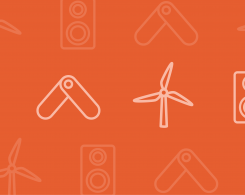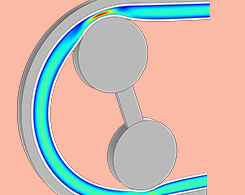Blog Posts Tagged User Perspectives

Comparing Optimization Methods for a Heat Sink Design for 3D Printing
When designing a heat sink, is it better to use parametric or topology optimization? When manufacturing said design, does 3D printing produce the best result, or a conventional method?

Defying Gravity with a Realistic Acoustic Levitator Model
It’s not just science fiction: Objects really can levitate. 1 way this is possible is by using sound waves to lift and suspend particles midair. Simulation can broaden the use of this technology.

Modeling Multi-Ply Materials with Composite Materials Technology
In a follow-up to a previous blog post on paper mechanics modeling, Eric Linvill of Lightness by Design compares 3 methods of analysis for multi-ply materials such as paperboard.

Veryst Combines Material Testing and Simulation for Reliable Results
Simulation helps companies develop the best designs. Understanding material behavior plays a key role in generating accurate simulations. Here’s how Veryst combines testing and FSI simulation.

Hydrodynamic Thermal Transport in the Kinetic-Collective Model
F. Xavier Alvarez from the Universitat Autònoma de Barcelona (UAB) discusses using COMSOL Multiphysics® to model heat transfer at the nanoscale and better understand transport processes.

Simulation Applications Enable Digitalization at ABB Traction Motors
Here’s a real-world example of optimizing R&D processes with COMSOL Server™: At ABB Traction Motors, engineers use simulation applications to analyze CFD and heat in electric motor designs.

Paper Mechanics and the Benefits of Modeling Paperboard Formation
Get a quick introduction to paper mechanics before guest blogger Eric Linvill discusses modeling a L&W bending resistance test piece for cost-benefit analyses in paperboard production.

Keynote Video: Optimizing Cable Systems via Simulation
The length of cable for a mode of transportation depends on the amount of passengers, so a car uses ~5 km of cable and a cruise ship uses ~5000 km. Learn more about cable system design here.
